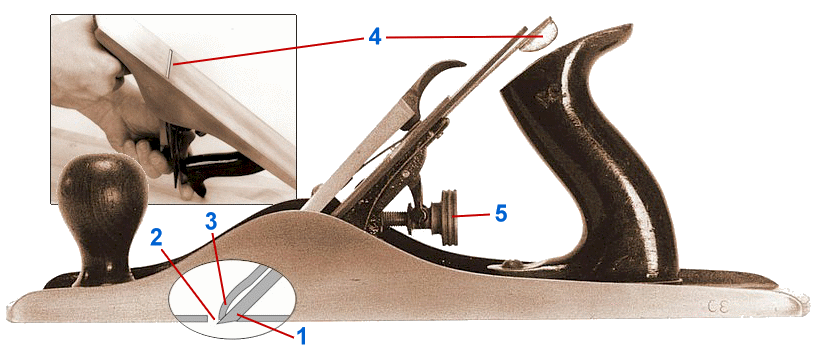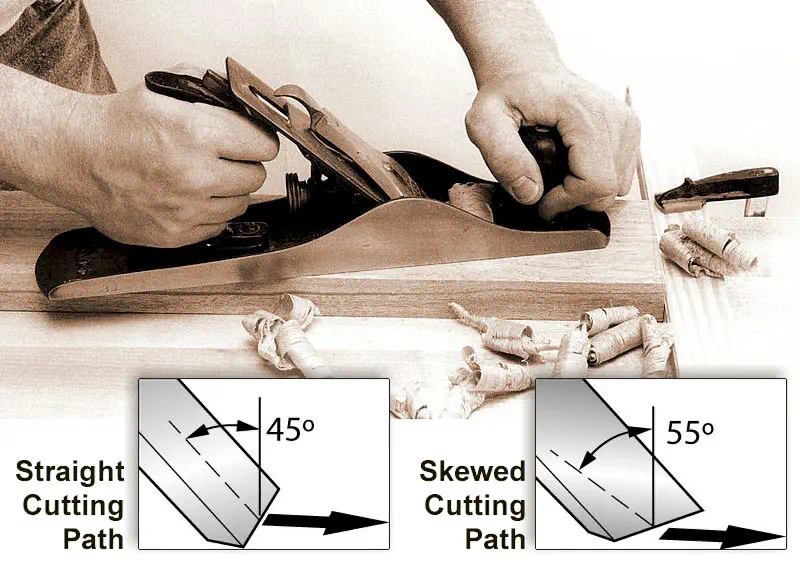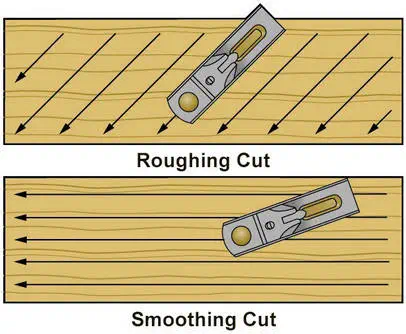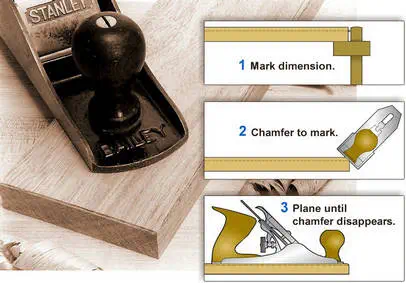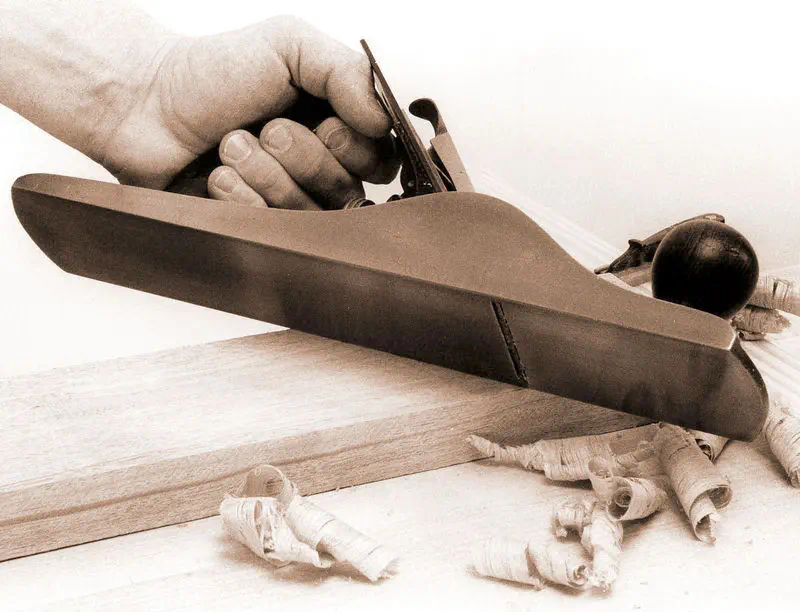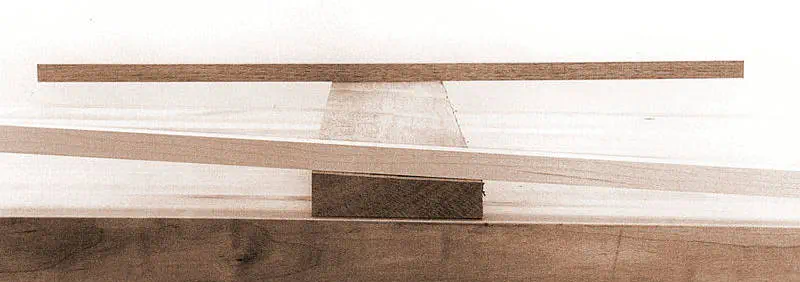TUNING A HAND PLANE
1 Sharpen the plane iron at 25 degrees for general work — a few degrees less if you work mostly with soft woods, a few degrees more for extremely hard woods or heavy-duty planing. A bit of tool-savvy: If there is a trick to using a hand plane, proper sharpening is 90% of it. The iron must be razor sharp and the cutting edge every bit as straight as the plane's sole is flat.
2 If the plane has an adjustable mouth, open it to 1⁄8 inch wide or more for rough cuts, 1⁄8 inch wide or less for fine cuts. You can also adjust it to control tear-out — close it down if the wood is tearing.
3 If the plane has a chip breaker, position it 1⁄16 inch or more from the cutting edge for rough cuts, 1⁄16 inch or less for fine cuts. You may also want to adjust it for the type of wood — more for softwoods, less for hardwoods.
4 Advance the iron until it’s flush with the mouth, and adjust it so the cutting edge is parallel to the sole.
5 Retract the iron into the mouth, then slowly advance it as you make test cuts on a scrap board. Stop when the plane is cutting paper-thin shavings the full width of the iron.
